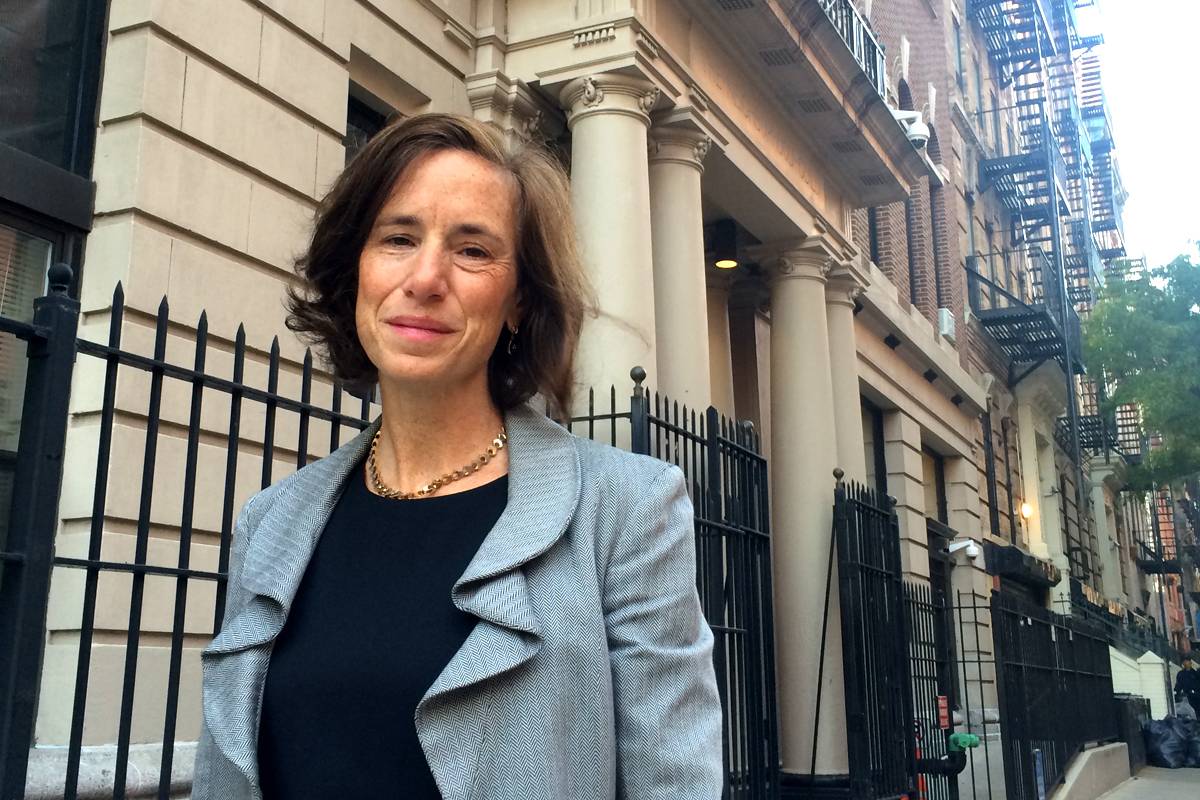Best Practices
On the Rewards of Nonprofit Board Service, with Amy Houston T’97.

On the Rewards of Nonprofit Board Service, with Amy Houston T’97.
Seeing firsthand how a board of directors with for-profit management experience can help a nonprofit inspired Amy Houston T’97 to attend Tuck. She kept this lesson in mind when she joined the Robin Hood Foundation, New York City’s largest poverty-fighting organization, in 2003 and rose through its ranks to become managing director, management assistance and administration. “Robin Hood is really the place where the time, talents, and resources of the for-profit sector meet the non-,” she says. “Our goal is to figure out how to do the most good in the social impact space.”
Robin Hood funds the 200 best poverty-fighting nonprofits in New York City. We’ve placed more than 500 professionals on boards. For people who are interested in that space and live in this area, let’s have a conversation. Looking at it more globally, the number-one place I point people to is Bridgespan, which posts all kinds of board opportunities.
All of our boards are looking for a combination of wealth, wisdom, and work. It’s in different portions for every organization. In general, you’re looking for the board that fits with the kind of commitment you’re looking to make. For Robin Hood, our grantees right now are looking for people with ten years of experience and up.
People with for-profit smarts bring amazing skills to the nonprofit sector. Wherever your expertise lies—anything from finance to marketing to strategy to real estate to human capital to operations and beyond—you can make a critical impact by joining a nonprofit’s board.
The trick is learning how to adapt your skills and experience for the realities of the nonprofit sector. Unfortunately, it’s not as easy as just taking your tools and adapting them straightaway. First, you have to really understand the industry and particular space the nonprofit is working in.
In many ways, the nonprofit space is actually more complex than the for-profit. In the nonprofit space, you make a great product, you have a demand for it, and it doesn’t necessarily translate into increased revenue because there’s a separation between the people who are consuming your product and the people who are paying for it. It’s important to understand that difference from the beginning.
When you give of yourself or volunteer, you receive far more than you give. That’s just the nature of service. From an emotional standpoint, you’ll get incredible psychic benefits from board service by contributing to a cause that’s greater than yourself.
At the same time, you also get a real way to expand your professional viewpoint and skills. On a nonprofit board, you take the things you do on a daily basis for work and apply them in a completely different industry, often at a completely different scale. You might be taking an idea and seeing it to its limitations, working with a team that’s very different from your own, or doing the kind of stakeholder alignment and buy-in that’s often really different in the nonprofit sector.
I always like to point to one of my colleagues on Tuck’s MBA Advisory Board. Mike Koester T’99 is a partner and managing director at Goldman Sachs. When Robin Hood placed him in a board seat, he already had a very big job. So he had to go from thinking about finance on a very macro scale to getting into the weeds and helping a nonprofit through some times of crisis. His story is emblematic of the lifelong impact that individuals can make. We see those success stories every day.
Working at Robin Hood allows me to turn New York City into a small town. Neighborhood by neighborhood, we really do see the differences individuals make for others. We get to see heroes and innovation and the smartest, savviest, most effective organizations in New York. We get to be a helping hand and a partner in service to some of the best and brightest solving some of the most important problems in our city today. It really is a total privilege.